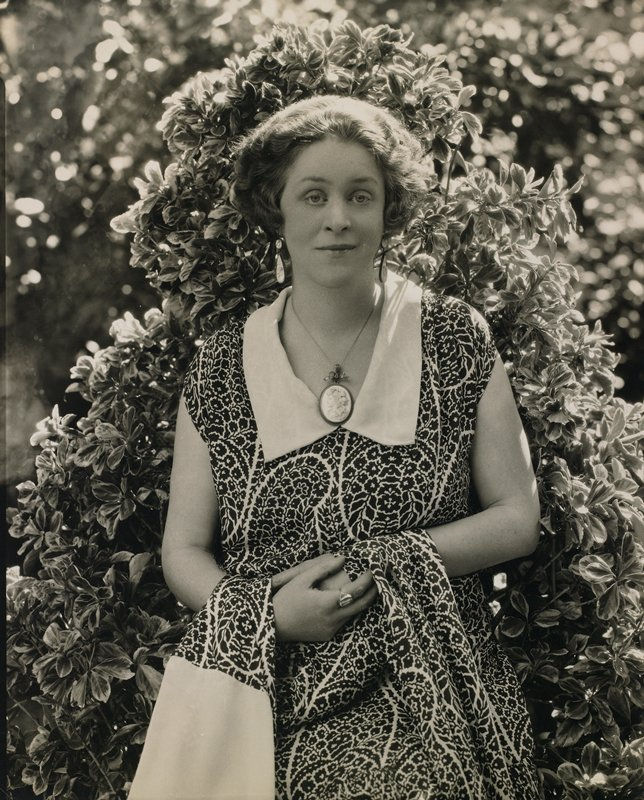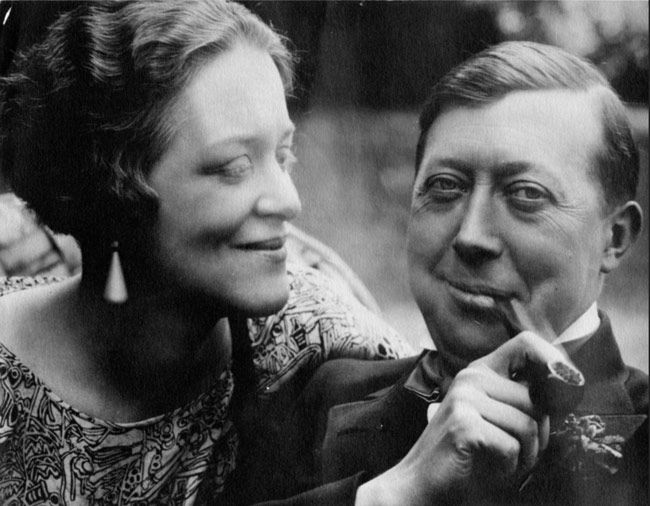A new lucky dip - an old book
- rosemary
- Jul 20, 2022
- 3 min read
"This is not the cuisine for the housewife-in-a-hurry. But if time is available, how can it be better spent, how used to give greater pleasure to others.?" H. W. Yoxall

This rather wonderful portrait is of Francine - a nom de plume for a lady with the rather more imposing name of Yvonne 'Cosette' de Brunhoff Vogel. That dress and the matching scarf, which blend perfectly with the leaves behind. I love it.
And the expression on her face. I don't know - it's just perfect somehow. In the introduction to the book I am about to write about, H. W. Yoxall - for many years the head of Vogue's London office - says of her:
"Francine was a large (not fat) lady; no beauty, but with an engaging frankness of feature."
Which to my mind is rather unfair. But maybe he was writing of a later time.
Francine is the name that she used when she wrote about food for Vogue Paris. However, she was not just one of the magazine's writers. She was the magazine's first Paris editor which was surely a big job - one that she began in 1921. And according to H. W. Yoxall her brother was one of its editors too.

Vogel is her married name and here she is with her husband Lucien who is looking very dapper in another pleasing portrait taken by the same man - Edward Steichen. He would look dapper - he was the editor of Jardin des Modes - another famous fashion magazine of the time, and later the founder of a magazine called Vu which was the predecessor of magazines like Life. Prior to WW2 they moved to America for safety. He had very left-wing views, and they were possibly Jewish too as one of their daughters survived a concentration camp. And how harrowing must that have been for them. But I see that Francine died in Paris in 1964, aged 78 so obviously at some point they returned to France.
To add to her pedigree her brother Jean de Brunhoff is the creator of the Babar the elephant books. Remember them?
So why does she feature here?

Well this is a lucky dip and this the chosen book, which back in 1998 was given to me. Inside the cover there is this: "Rosemary with grateful thanks. Xmas 1998" I have no idea who wrote that. For a moment I thought it was my mother's writing, but she was long dead in 1998. There is no signature and it's definitely not David, so now I shall wonder forever, who on earth was grateful to me.
This edition was first published in 1976 - it is an edited edition - the editor being Mary Reynolds. But the first edition, I think, was published in 1961. I can't find much about it on the net, but I think it's a collection of recipes from 'Francine's' columns in Vogue which surely must have been written way back in the 20s and 30s. I wonder why somebody at Vogue suddenly decided to publish the book? She is not that well-known in the cookery world after all, and she hadn't just died.
I'm pretty sure that I have never made anything from this book, but I am reluctant to throw it out for some reason. And now, I am even more reluctant because it's a nicely produced book with appealing and evocative line drawings throughout by an artist called David Gentleman - see below a couple of examples:
The recipes are good too. The one in the middle there - Poulet au Porto à la crème - for example is in so many ways a typically French recipe for a sautéed chicken. It's really simple - pan fry the chicken and then fundamentally deglaze the pan with port and cream enriched by egg yolks. Very typically French and you will find lots of similar recipes online - most notably from Julia Child, although they mostly include mushrooms in the mix. The other chicken recipes on the page are Poulet Mystère - I think the mystery might be the addition of some Worcestershire sauce, Poulet Quo Vadis and Poulet en Daube. All very doable and actually quite tempting. So I have no idea why I have not dipped into this more often. The recipes are not classics, it's more the kind of cooking that the bourgeois housewife would have produced back then. Do they still I wonder?
Should I give this to the street library? No I think I have a sentimental attachment to this for some very strange reason which I simply cannot define. Maybe it's the drawings. The third one in that row above could almost be the view from our Australian friends' French house. It could be a french village anywhere.
I shall put it back on the shelf, where it will probably remain untouched, unloved, forgotten for years to come. How sad.









Comments